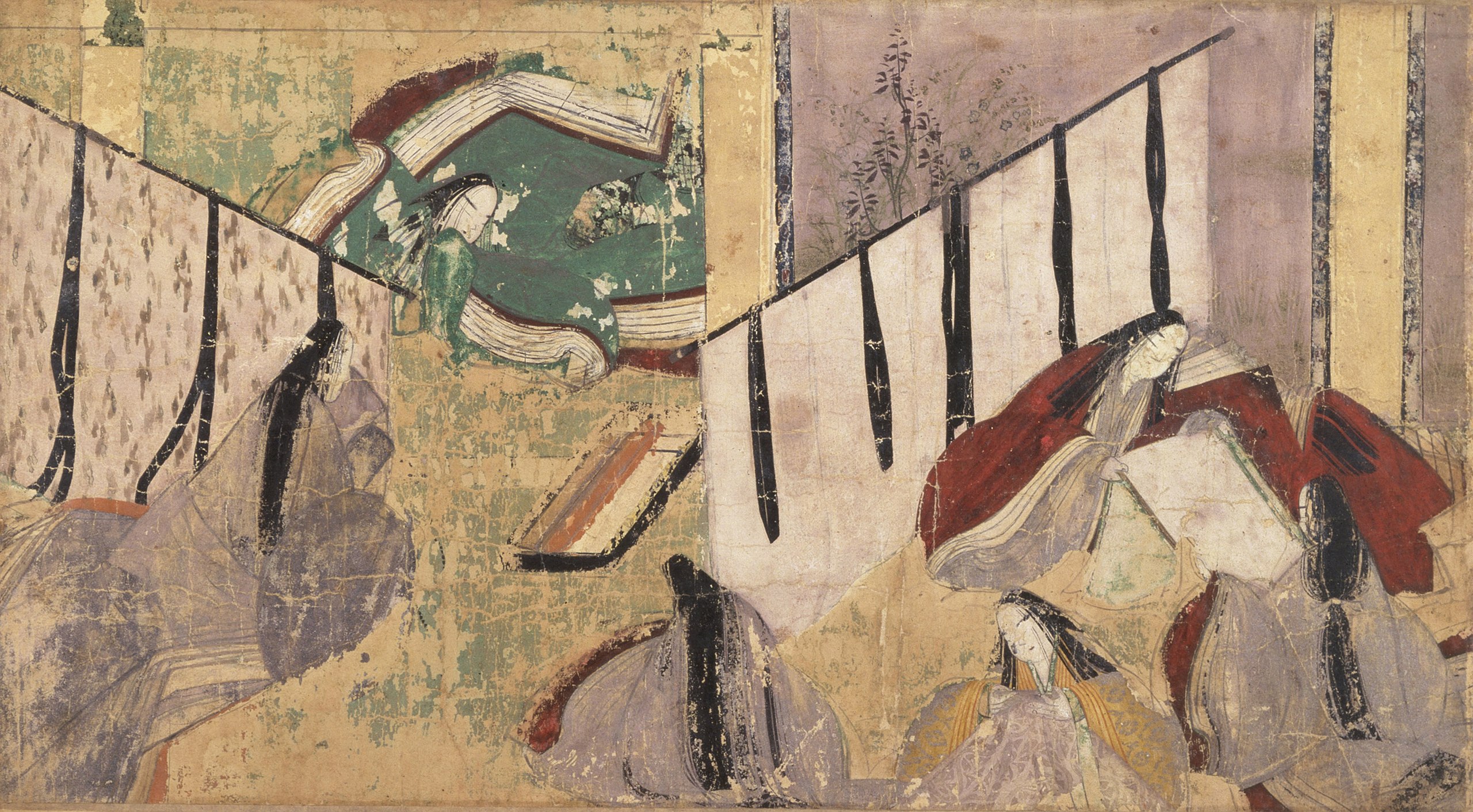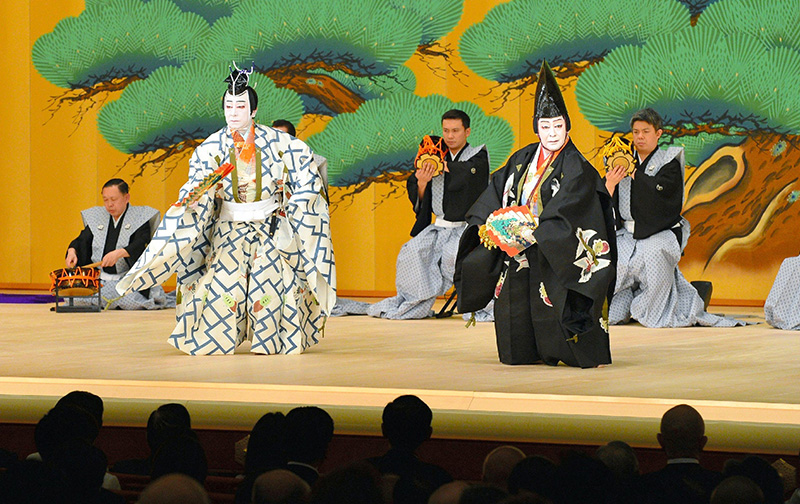Japanese literature ranks as one of the world’s great literatures. It reflects many characteristics of the Japanese people, such as their appreciation of tradition and their sensitivity to nature. The earliest Japanese written literature dates from the A.D. 700’s. But Japan long remained isolated from the rest of the world, and its written language was difficult to master. Therefore, Japanese literature remained almost unknown outside Japan until the 1900’s.
(Japanese names traditionally consist of a family name followed by a given name. But many modern Japanese names are written in the reverse order, particularly in the West. For example, the author known in Japan as Abe Kobo is called Kobo Abe in the West. This article follows the Western order in giving the names of Japanese authors starting in the early 1900’s. Also, some classical Japanese authors are known only by their court names. For example, in Japan, Murasaki Shikibu and Sei Shonagon are known as Lady Murasaki and Lady Sei, respectively.)
Beginnings.
The oldest existing works of Japanese literature are two histories, The Record of Ancient Matters (A.D. 712) and The Chronicles of Japan (720). These works trace the origins of the imperial family and also include folk tales, legends, myths, and songs.
The earliest collection of Japanese poetry, the Man’yoshu (Ten Thousand Leaves), also appeared during the 700’s. It contains more than 4,500 poems by hundreds of poets. Japanese poems, partly because of the nature of the language itself, have subtle rhythms and no rhyme. They are written with a fixed number of syllables. The Man’yoshu consists mainly of 31-syllable poems called tanka, which deal with such topics as friendship, love, and nature. It also has some longer poems, many of which celebrate the imperial family.
The Heian period (794-1185)
was the first great period of Japanese literature. Most people who wrote and enjoyed literature at the time were members of the nobility. Many of the greatest writers were women.
The first work of Japanese fiction, The Tale of the Bamboo Cutter, written by an unknown author, dates from the early 900’s. In the early 1000’s, Murasaki Shikibu, a lady-in-waiting at the imperial court, wrote The Tale of Genji. This long novel is considered the greatest work of Japanese fiction. It far surpassed previous stories with its sophisticated style and delicate descriptions of human emotion.

Diaries and essays were also important literary forms during the Heian period. Sei Shonagon portrayed the customs and values of Heian court society in her volume of essays called The Pillow Book, completed about 1002.
By the 900’s, the vocabulary and themes of Japanese verse had narrowed, reflecting the elegant tastes of the aristocracy. Technical skill was an important feature of Heian poetry, which celebrated the beauties of the passing seasons and the fine shadings of human emotion. Beginning in the 1100’s, poetry increasingly reflected an awareness of the fragility and the fleeting nature of life. This awareness was shaped by the political conflicts and warfare that ended the Heian period, as well as by the spread of Buddhist concepts about the lack of permanence in existence. In addition, poets tried to reach beyond the limits of short individual poems by composing groups of tanka with related themes and images.
The medieval period (1185-1587).
Japan’s educated warrior classes joined the nobility in producing and reading literature during the medieval period. In the early 1300’s, a trend toward historical fiction and an increasing mood of pessimism about human fate inspired the creation of The Tale of the Heike. This war story tells of the rise and fall of the Heike clan at the end of the Heian period. It exists in many versions. Some versions were recited by wandering blind minstrels who accompanied themselves on a stringed instrument called a biwa. The Tale of the Heike was the source of stories for both plays and fiction in later centuries.
The most famous medieval Japanese essays include An Account of My Hut by Kamo no Chomei and Essays in Idleness by Yoshida Kenko. These works provide insight into traditional Japanese attitudes toward life and art. In poetry, the tanka remained the chief verse form throughout the medieval period. However, poets also composed renga, which were chains of interlocking poems written by several poets.
The oldest form of Japanese drama, the noh drama, was first performed in the 1300’s. It developed from performances of song and dance that had long been part of religious and folk rituals. In the late 1300’s, an actor and playwright named Zeami Motokiyo shaped the noh drama into the form in which it is still performed today. He combined dancing and chanting with literary themes and poetic language from the past.
The Tokugawa period (1603-1867).
The most successful literary works of the Tokugawa period were those aimed at people of the new middle classes, who lived in the cities. Many prose works of the time dealt with scenes of urban Japan and with humorous or earthy subjects. In the late 1600’s, Ihara Saikaku abandoned a successful career as a poet and became the most famous fiction writer of the period.
During the Tokugawa period, a new verse form called haiku challenged the popularity of the tanka. Haiku has 17 syllables and began as a comic style of verse that was simple to write. But in the late 1600’s, Matsuo Basho changed haiku into a serious art form. His haiku, written according to strict rules, present aspects of nature and contain a reference to a season of the year. As with most Japanese poems, haiku merely suggest ideas and feelings, and so the reader must use imagination to interpret them.
Two new types of drama, kabuki and bunraku (puppet theater), flourished during the 1600’s. Kabuki are melodramatic plays that feature colorful costumes and lively music and acting. The puppet theater of the early 1700’s featured several dramatic masterpieces by Japan’s greatest playwright, Chikamatsu Monzaemon. The poetic power of Chikamatsu’s scripts turned humble characters, such as shop clerks and prostitutes, into tragic figures. See Drama (Japan).

The modern period.
The influence of the West has greatly changed Japanese literature since the end of the Tokugawa period. A major result of this influence has been the development of the modern novel. During the 1880’s, a small group of writers educated in Western languages called for a break with older forms of literature.
Such authors as Futabatei Shimei and Tsubouchi Shoyo thought the Japanese should write European-style novels as an intellectual counterpart to Japan’s technological modernization. Futabatei soon produced such a novel, Drifting Clouds (1887-1889, translated into English in 1967). Drifting Clouds, like many other early Japanese novels, was first published in serial form.
Many people consider Soseki Natsume the greatest Japanese novelist. As a novelist and literary critic of the early 1900’s, he established the modern novel as a respected form of literature. His first novel was the satiric I Am a Cat (1905-1906). Naoya Shiga’s novel A Dark Night’s Passing (1921-1937) ensured his fame. Other outstanding modern Japanese novelists include Jun’ichiro Tanizaki, who wrote Naomi (1924-1925) and the epic saga The Makioka Sisters (1943-1948); Kobo Abe, whose works include The Road Sign at the End of the Street (1948) and The Woman in the Dunes (1962); and Yukio Mishima, whose most lasting work is perhaps The Sea of Fertility (1965-1970).
Two Japanese novelists have won the Nobel Prize for literature, Yasunari Kawabata in 1968 and Kenzaburo Oe in 1994. Among contemporary novelists, Miyuki Miyabe writes crime fiction and science fiction, including the thriller All She Was Worth (1992, translated into English in 1996). Natsuo Kirino is well known for her detective fiction, such as Out (1997, translated into English in 2004). Haruki Murakami has achieved fame for such works as Wild Sheep Chase (1982, translated into English in 1989) and 1Q84 (2009-2010, translated into English in 2011).
Western literature has also influenced modern Japanese poetry and drama. Some poets still write the traditional tanka and haiku, but longer poems and free verse now account for much Japanese poetry. Modern Western-style drama and experimental theater are also popular.
In spite of Western influences, however, tradition remains strong in Japan. Many writers of the 1900’s and 2000’s draw on traditional themes and techniques, and compose traditional forms of literature.
